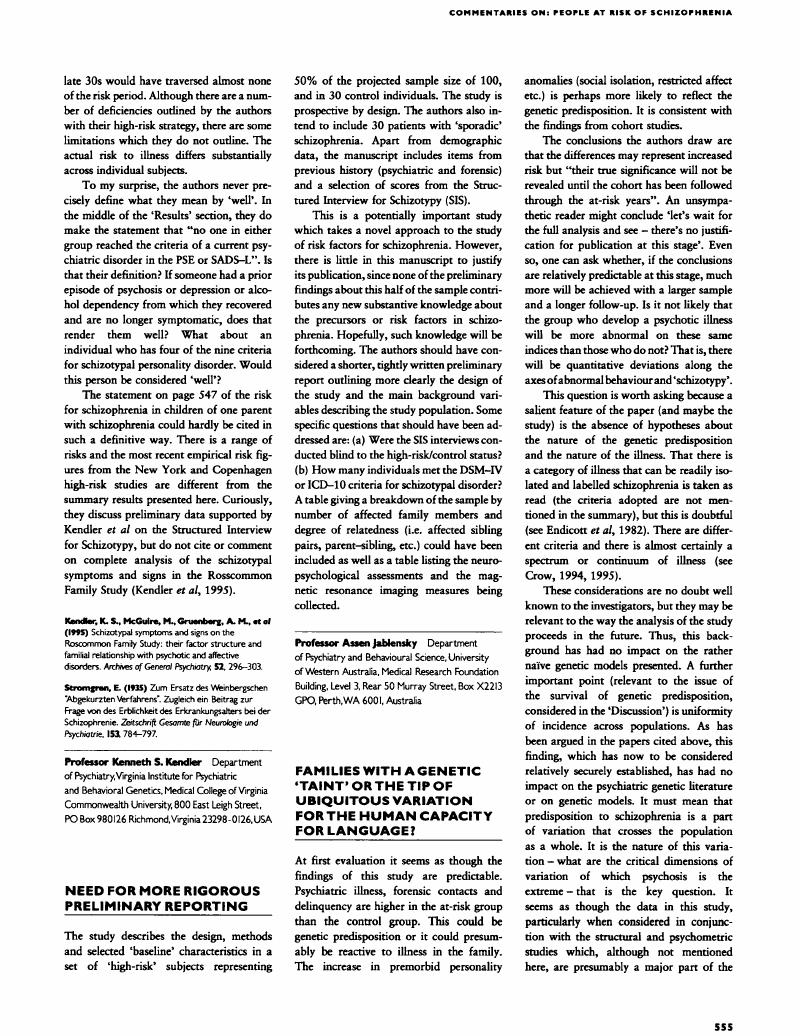No CrossRef data available.
Article contents
Families with a Genetic ‘Taint’ Or the Tip of Ubiquitous Variation for the Human Capacity for Language?
Published online by Cambridge University Press: 03 January 2018
Abstract
An abstract is not available for this content so a preview has been provided. As you have access to this content, a full PDF is available via the ‘Save PDF’ action button.

- Type
- Preliminary Report
- Information
- Copyright
- Copyright © 1999 The Royal College of Psychiatrists
References
Crow, T. J. (1994) The demise of the Kraepelinian binary system as a prelude to genetic advance. In Genetic Approaches to Mental Disorders (eds Gershon, E. S. & Cloninger, C. R.) pp. 163–192. Washington. DC: APA.Google Scholar
Crow, T. J. (1995) A continuum of psychosis, one human gene and not much else – the case for homogeneity. Schizophrenia Research, 17, 135–145.Google Scholar
Crow, T. J. (1997) Is schizophrenia the price Homo sapiens pays for language?
Schizophrenia Research, 28, 127–141.Google Scholar
Endicott, J., Nee, J., Fleiss, J., et al (1982) Diagnostic criteria for schizophrenia: reliabilities and agreement between systems. Archives of General Psychiatry
39, 884–889.Google Scholar





eLetters
No eLetters have been published for this article.